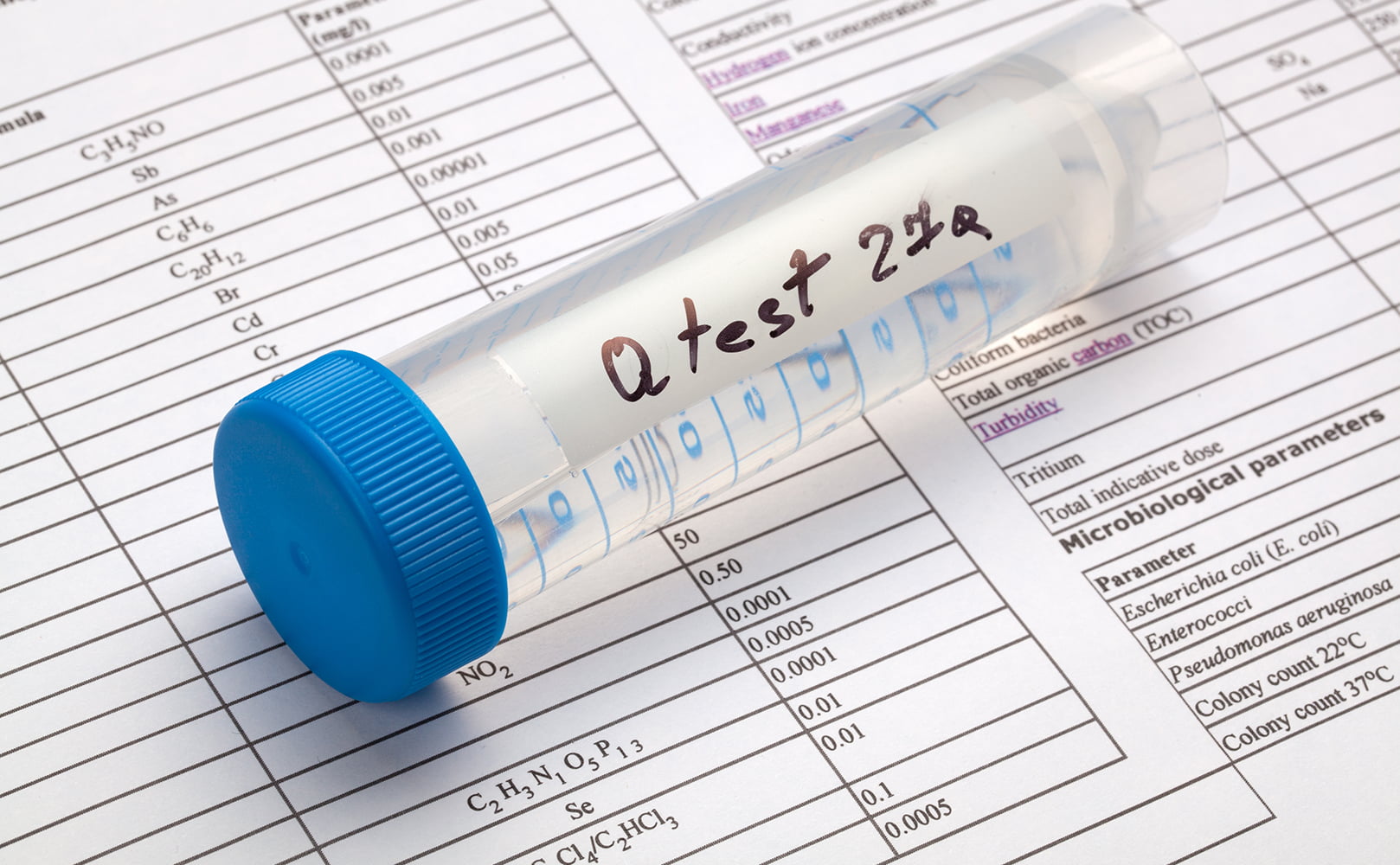Does Reverse Osmosis Remove Pesticides from Water?
Written by: Alexandra Uta // Last Updated: May 10, 2023
This page may contain affiliate links. If you buy a product or service through such a link we earn a commission at no extra cost to you. Learn more.
Reverse osmosis is popular for eliminating contaminants in drinking water. It tackles a broad and impressive range of pollutants and impurities and is the reason for clean water in many homes.
If you have pesticides in your water, you might be considering reverse osmosis as a possible treatment solution. But before you purchase a reverse osmosis system, let’s learn all the facts.
In this article, we’ll talk about reverse osmosis and if it removes pesticides from water. We’ll also discuss other ways you can eliminate pesticides.
Key Takeaways
- A reverse osmosis membrane alone is ineffective at removing pesticides from water.
- However, reverse osmosis systems for home use do remove pesticides due to their activated carbon pre and post-filters.
- The AquaTru reverse osmosis system, for example, is certified to remove atrazine (>97%), lindane (>99%), and linuron (86.7%) among other pesticides.
Does Reverse Osmosis Remove Pesticides from Water?
First of all, does reverse osmosis remove pesticides from water?
No, reverse osmosis does not remove pesticides from water.
But while the reverse osmosis membrane in a home reverse osmosis system does not contribute much to pesticide removal, the activated carbon pre-filters and post-filters excel at removing pesticides.
In other words, reverse osmosis water purification does not remove pesticides, but a reverse osmosis system that uses activated carbon for pre/post-filtration does remove pesticides.
But remember, there are so many types of pesticides, and a single carbon filter cannot remove every type. To be on the safe side, check your RO system to see what pesticides it is certified to remove.
For instance, the AquaTru countertop RO water filter is NSF-certified to remove these pesticides among others:
- Atrazine (>97%)
- Lindane (>99%)
- Linuron (86.7%)
That said, even if a water filter isn’t certified to remove a particular pesticide, it doesn’t have to mean that it will be unable to remove it., it just wasn’t tested for it. Still, we like to err on the side of caution and prefer reverse osmosis systems that have been tested against NSF standards for pesticide removal.
Other Contaminants Removed by Reverse Osmosis
Other contaminants removed by reverse osmosis include dissolved ions such as:
- Aluminum (98%)
- Arsenic (96%)
- Barium (96%)
- Cadmium (96%)
- Calcium (96%)
- Chloride (88%)
- Chromium 6 (94%)
- Cyanide (88%)
- Iron (96%)
- Lead (96%)
- Manganese (96%)
- Mercury (97%)
- Nickel (97%)
- Nitrates (68%)
- Potassium (90%)
- Sodium (90%)
- Sulfate (97%)
- Sulfite (97%)
From the list above, it’s evident that reverse osmosis has a high success or reduction rate with different dissolved ions. But that’s not all. Reverse osmosis can also remove radioisotopes like uranium and radium. In addition, particles and organic contaminants like bacteria, cysts, viruses, and protozoans are all removed by reverse osmosis.
In summary, reverse osmosis removes:
- Metals
- Minerals and salts
- Radioactive elements
- Bacteria, viruses, and protozoa
- Sediment, silt, and rust
- Other organic and inorganic compounds
The Most Common Pesticides Found in Tap Water
Pesticides are broadly grouped into insecticides and herbicides. These are some of the most common pesticides you can find in tap water:
- Atrazine: This herbicide is commonly found in tap water. It causes low birth weight and heart and limb defects in babies. It also slows down fetal development. If a pregnant woman is highly exposed to atrazine, the fetus will have trouble surviving.
- Alachlor: Drinking alachlor-contaminated water, even for a short period, leads to digestive problems like diarrhea and vomiting. Neurological symptoms like dizziness and headaches may also be present. In the long term, this pesticide can cause severe liver and kidney damage and several cancers.
- Carbaryl: This compound is used as an insecticide. Carbaryl causes memory loss, muscle tremors, cramps, and even behavioral changes in humans.
- Chlorpyrifos: Drinking water contaminated with this insecticide can cause diarrhea, nausea, and vomiting. Some people also experience muscle cramps, and long-term exposure to chlorpyrifos increases the risk of developing cancer.
- Cyanazine: This chemical increases the risk of congenital disabilities and can also cause some cancers.
- Deethylatrazine: This agricultural herbicide affects the human reproductive system and causes obesity.
- Diuron: Diuron is a known carcinogen and causes kidney, bladder, uterine, and breast cancers.
- Prometon: This herbicide is toxic to ingest or even inhale.
- Metolachlor: After exposure to metolachlor, a person may convulse, experience skin irritations, swelling, diarrhea, and become short of breath.
- Simazine: This herbicide causes damage to the kidney, liver, testes, and thyroid. In some cases, gene mutation may occur.
- Tebuthiuron: This herbicide is only moderately toxic and causes slight irritation to the eyes. It’s very common in drinking water today and also found in meat products and milk.
- 2,4-D: This herbicide is used on lawns and golf courses and causes severe liver and kidney damage over time.
Other pesticides in drinking water include:
- Endosulfan
- Diazinon
- Malathion
- Parathion
- Aldicarb
- Carbofuran
- Fenpropathrin
- Hexachlorobenzene
- Fluopicolide
- Zoxamide
- Isoproturon
- Lindane
Health Effects
Generally speaking, the health effects of drinking pesticide-contaminated water depend on the type of pesticide in question.
For example, the nervous system is affected by pesticides like carbamates (aldicarb, carbofuran, carbaryl) and organophosphates (Malathion, parathion, diazinon).
Some pesticides may cause cancer, while others affect the body’s endocrine or hormone system. Some may also cause skin or eye irritation with varying levels of severity.
More health effects of pesticides in water include blindness, nausea, diarrhea, respiratory illnesses, congenital disabilities, immune system deficiencies, cancer, and cardiovascular disease.
How Can You Test Your Water for Pesticides?
Knowing that you have pesticides in your water is the first step to eliminating them. There are different ways to check for pesticides in water.
- The easiest way to know if your water has pesticides is by contacting your local water company. The EPA makes it compulsory for water companies to monitor water for contaminants, including certain pesticides, and to make their reports public. So, you can contact your local water company and ask for information on your water’s quality. It’s completely free.
- Water companies also send annual reports to consumers containing information about the water’s quality; from the type of contaminant present, to the level in which it exists.
- If you use a private water source, like a well, no water quality reports will be available for you. Your only option is to send your water sample to an EPA-certified lab. You can check the EPA website to locate the lab closest to you.
- Alternatively, you could test for pesticides with a home water testing kit, but lab tests are generally more specific and reliable.
Other Ways to Remove Pesticides from Water
Besides reverse osmosis, there are other ways to remove pesticides from water, such as:
- Activated carbon – Activated carbon is effective at removing certain organic pesticides from water.
- Alumina adsorption – Alumina is a type of aluminum oxide with a large surface area. It has a high adsorption rate, making it perfect for adsorbing pesticides to its surface. However, the success here depends on the kind of pesticide present and its concentration in the water.
- Distillation: This method filters pesticides out of water using heat. The distiller boils water until it evaporates, and then the steam cools back into purified liquid. Water has a lower boiling point from the pesticides, so the pesticides are left behind in the boiling chamber. This method is quite thorough; however, some contaminants may vaporize during the process and end up in the distilled water.
If you have any thoughts about the question, does reverse osmosis remove pesticides, please don’t hesitate to leave a comment below!
Information provided on BOS is for educational purposes only. The products and services we review may not be right for your individual circumstances.
We adhere to strict editorial guidelines. Rest assured, the opinions expressed have not been provided, reviewed, or otherwise endorsed by our partners – they are unbiased, independent, and the author’s alone. Our licensed experts fact-check all content for accuracy. It is accurate as of the date posted and to the best of our knowledge.



